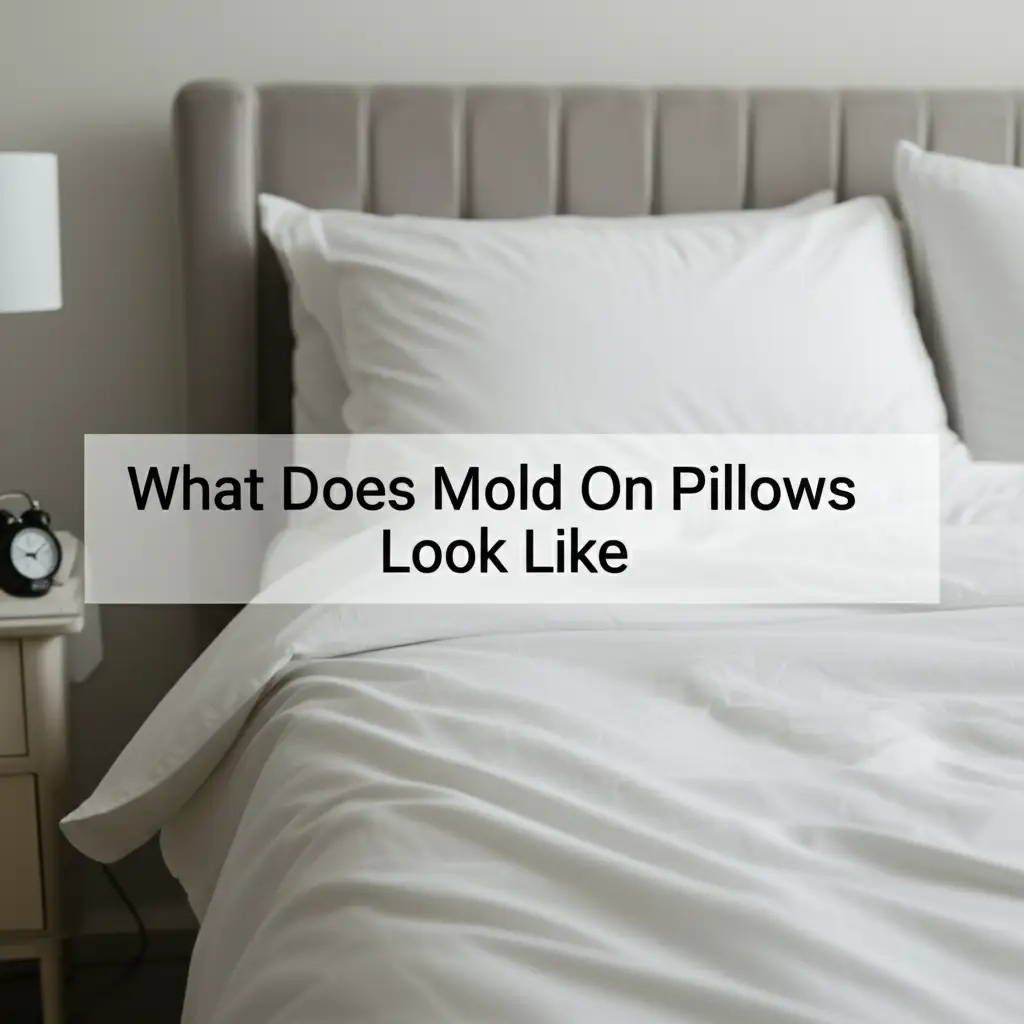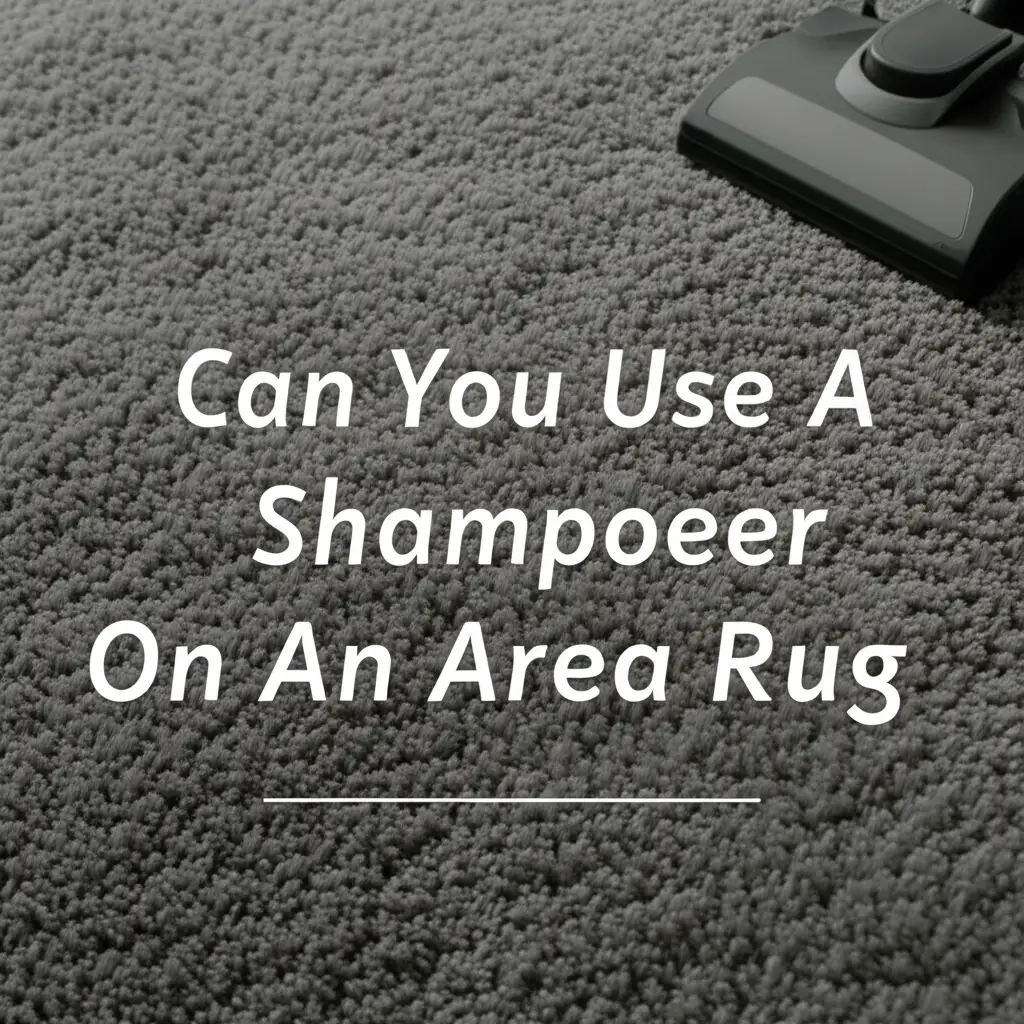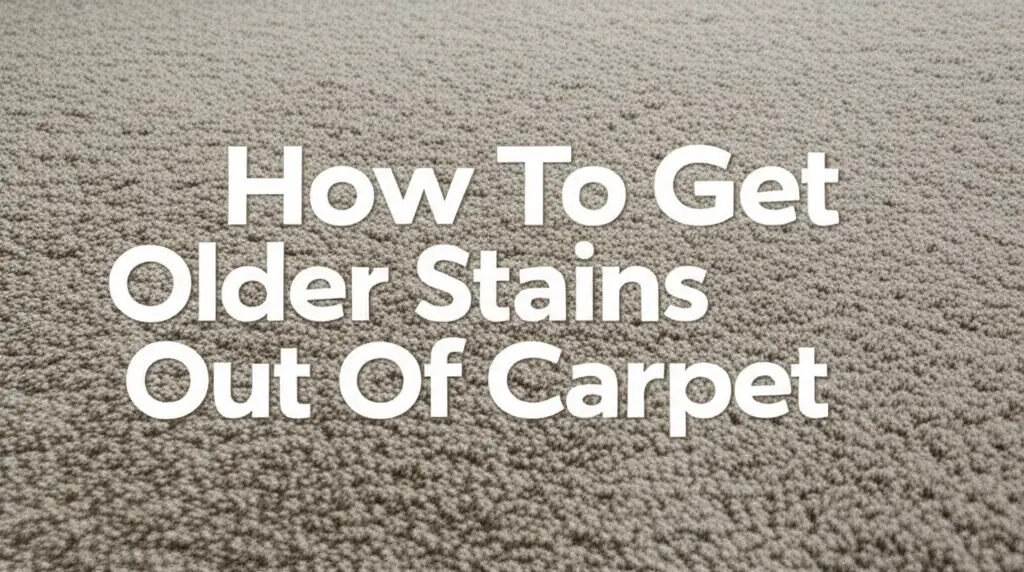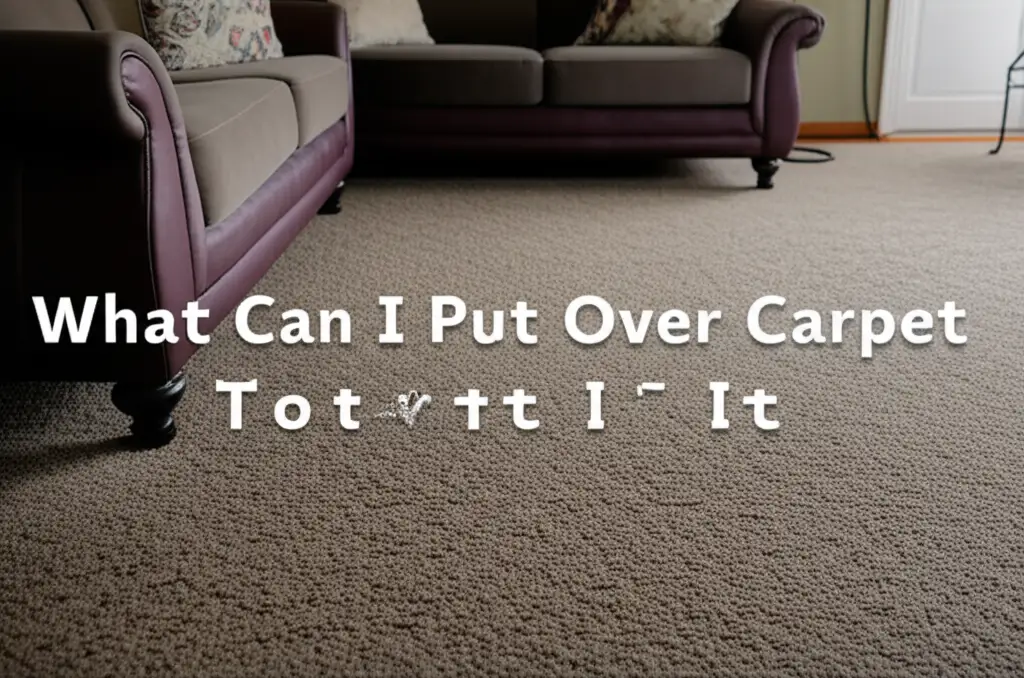· Liora Benning · Home Care · 13 min read
What Does Mold On Pillows Look Like

Spotting Pillow Mold: What Does It Look Like?
Sleeping feels like a sacred ritual, a time for rest and rejuvenation. But what if your trusty pillow, a comfort by night, harbors an unseen guest? Mold on pillows is more common than you might think. It can quietly grow, impacting your sleep quality and even your health. Identifying this unwelcome visitor early is crucial for maintaining a clean and healthy sleep environment. This article helps you understand what pillow mold looks like. It guides you through its various appearances, common causes, and offers clear steps for prevention and removal. You will learn to protect your sleep space and ensure your pillows remain truly comfortable.
Takeaway: Your Quick Guide to Pillow Mold
- Visual Cues: Look for discolored spots (black, green, pink, yellow, white) and fuzzy or slimy textures.
- Olfactory Signals: A persistent musty, earthy, or damp smell often indicates mold presence.
- Early Detection: Inspect pillows regularly, especially in humid conditions or after spills.
- Prevention First: Control humidity, use pillow protectors, and wash pillows frequently.
- Health Matters: Mold can trigger allergies and respiratory issues; prompt action protects your well-being.
- Know When to Replace: Severe or recurring mold often means it is time for a new pillow.
Pillow mold appears as discolored spots, typically black, green, or pink. It may also show as white, powdery patches. You might notice a musty, earthy smell. The texture can feel fuzzy, slimy, or even powdery to the touch. These signs indicate moisture issues and fungal growth.
The Initial Clues: Common Signs of Mold on Pillows
Finding mold on your pillow can be unsettling. It starts small, often unnoticed. You might not see it at first, but your nose may detect something is wrong. The smell is often the first clue. It is a distinct musty or earthy odor, like damp soil or old, wet clothes. This smell becomes stronger as the mold grows.
Visual signs often follow the smell. Mold appears as discolored spots or patches on the pillow fabric. The color of mold varies widely. You might see black, green, or brown spots. Sometimes, mold shows up as yellow or pink stains. White, powdery spots can also be mold, sometimes mistaken for dust. The texture can change too. Mold can look fuzzy, like velvet. It might also appear slimy or even powdery.
I found a small black spot on my pillow once. I thought it was just dirt. But the spot grew, and a musty smell started. That is when I realized it was mold. Checking your pillowcase and pillow directly helps confirm it. Remove the pillowcase and look closely at the pillow itself. Inspect all sides, especially corners and seams. These areas trap moisture easily. They are common spots for mold to begin.
Beyond the Visual: Understanding the Causes of Pillow Mold
Mold does not just appear by magic. It needs specific conditions to grow. Moisture is the number one requirement. Our pillows absorb sweat and oils from our bodies every night. They also absorb moisture from the air. If this moisture does not evaporate, it creates a damp environment. This dampness is perfect for mold spores.
High humidity in your bedroom also contributes significantly. If your room feels perpetually stuffy or damp, mold is more likely to thrive. Lack of proper ventilation traps moist air inside. This makes pillows an easy target. Spills, like water or drinks, also introduce moisture. If you spill something on your pillow and do not dry it completely, mold can start. Even damp hair resting on the pillow after a shower adds moisture.
Pillows also contain materials that mold feeds on. Dust mites and dead skin cells accumulate in pillows over time. These organic materials provide nutrients for mold spores. Combine these nutrients with warmth and moisture, and you have a mold breeding ground. Just like what causes mold to grow on carpet edges in closets, moisture and lack of airflow are key culprits for mold on your pillows too. Understanding these causes helps you prevent mold from ever starting.
What Different Types of Mold Look Like on Pillows
Mold on pillows can show in various forms and colors. Each type gives a clue about its growth. Identifying the specific look helps you address it correctly.
Black Mold
Black mold is perhaps the most concerning type. It often appears as dark black or greenish-black spots. These spots can be small and scattered. They can also grow into larger, spreading patches. The texture often looks fuzzy or slimy. Black mold commonly forms in areas with consistent moisture. It can be particularly harmful to health. If you see extensive black mold, especially with a strong musty odor, consider extreme caution.
White Mold
White mold often looks like a powdery substance. It might appear flat or slightly fuzzy. Sometimes, people confuse it with dust or mildew. White mold can blend in with lighter pillow fabrics. It may even look like a cluster of tiny white hairs. This type of mold can also produce a musty smell. Identifying white mold can be tricky. Look for its growth pattern, which is usually in circular or spreading patches.
Pink Mold
Pink mold on pillows is usually not a true mold. It is often a bacterium called Serratia marcescens. This bacterium thrives in moist environments. It appears as slimy, reddish-pink, or orange-pink streaks or patches. You might find it on shower curtains too. On pillows, it often looks like a stain. It typically feels slick or greasy to the touch. While not a typical mold, it still indicates excessive moisture and poor hygiene.
Green Mold
Green mold is very common. It often looks like fuzzy, green, or blue-green patches. This type of mold can spread quickly. You might see it on old food or damp surfaces. On pillows, it can start as small specks. These specks then expand into larger, cotton-like growths. Green mold gives off a distinct musty smell. Its vibrant color makes it easier to spot than some other types. All these appearances signal the need for action.
The Health Risks: Why You Should Care About Pillow Mold
Sleeping on a moldy pillow is not just unpleasant. It poses real health risks. Mold releases tiny spores into the air. When you breathe these spores, they can affect your respiratory system. This is especially true since your face is so close to the pillow for hours each night.
Common symptoms include allergic reactions. You might experience sneezing, coughing, or a runny nose. Your eyes could become itchy and watery. Some people develop skin rashes or irritation. These symptoms often worsen during the night or upon waking up. I remember feeling congested every morning. I thought it was just allergies until I checked my pillow.
For individuals with asthma or other respiratory conditions, mold is particularly dangerous. Exposure can trigger asthma attacks. It can lead to shortness of breath or wheezing. Prolonged exposure can even cause more serious respiratory infections. Children and people with weakened immune systems are also more vulnerable. Mold exposure can lead to headaches, fatigue, and general malaise. A healthy sleep environment is crucial for overall well-being. Eliminating pillow mold removes a significant health hazard.
Prevention is Key: Stopping Mold Before It Starts
Stopping mold before it starts is much easier than dealing with it later. Good habits can make a big difference. One simple step is to wash your pillowcases regularly. Wash them at least once a week. This removes sweat, oils, and dead skin cells. These are food sources for mold. Consider using a pillow protector. These zip-up covers create a barrier. They prevent moisture from reaching the pillow itself. They are often washable too.
Proper ventilation in your bedroom is essential. Open windows daily to let fresh air circulate. This reduces humidity levels. If your bedroom is consistently humid, use a dehumidifier. A dehumidifier removes excess moisture from the air. This makes the environment less favorable for mold growth. It helps to keep your entire bedding dry. Just as will water in vents from carpet cleaning grow mold shows, moisture anywhere in your home creates a risk.
Allow your pillows to air out regularly. When you change your bedding, let your pillows sit exposed for a few hours. Sunlight is a natural mold inhibitor. Occasionally, take your pillows outside on a sunny, dry day. Let them air out for a few hours. This helps to dry out any lingering moisture. It also kills mold spores. These small actions help keep your sleeping space fresh and mold-free.
Is It Salvageable? Cleaning Moldy Pillows Safely
When you discover mold on your pillow, the first thought might be to throw it away. However, small, superficial mold spots can often be cleaned. The success of cleaning depends on the pillow material and the severity of the mold. Always check the care label on your pillow first. Some pillows, like memory foam or down, require specific cleaning methods.
For washable pillows, a hot water wash cycle is usually effective. Add your regular laundry detergent. For tougher mold, you can add a mold-killing agent. This could be a cup of white vinegar or a quarter cup of bleach. Bleach works well but can damage certain fabrics. Vinegar is a gentler, natural alternative. You can learn more about general mold cleaning techniques by reading about how to clean mold off dishwasher. Always ensure the pillow is compatible with hot water and any chosen additive.
I once had a small spot of mold on a synthetic pillow. I soaked it first, similar to how what does soak mean on a washing machine describes for laundry. Then I machine washed it with hot water and vinegar. The most critical step is complete drying. Mold thrives on moisture. If the pillow remains even slightly damp, mold will return. Use a low-heat setting in a dryer. Add dryer balls to help fluff and dry the pillow evenly. You might need to run the dryer cycle multiple times. Make sure the pillow is bone dry before putting it back on your bed. If the mold is extensive or deeply embedded, cleaning may not be enough.
When to Let Go: Replacing Your Mold-Infested Pillows
Sometimes, cleaning is not enough. You must know when to replace a mold-infested pillow. This decision depends on several factors. The first factor is the extent of the mold. If the mold covers a large area of the pillow, it is probably too deep to clean effectively. Mold spores can penetrate deep into the pillow’s fibers. Surface cleaning will not remove all of them. This means the mold will likely return quickly.
Another factor is the type of pillow. Some materials are harder to clean than others. Memory foam or solid foam pillows can be difficult to dry completely. Down or feather pillows can also be challenging. If the pillow has been moldy for a long time, replacement is wise. Old mold indicates long-term moisture issues. Such pillows are often beyond repair. The presence of mold also affects the pillow’s integrity. It can break down the materials inside. This makes the pillow less supportive and less comfortable.
Your health is the most important factor. If you experience persistent allergies or respiratory issues, replace the pillow. Even if you try to clean it, some spores may remain. A new pillow offers a fresh, clean start. It protects your health and improves your sleep quality. Pillows do not last forever anyway. Experts suggest replacing pillows every 1-2 years. You can learn more about this by reading how often should you replace pillows. This general guideline includes cases of mold. Do not risk your health over an old pillow. It is better to invest in a new, clean one.
Frequently Asked Questions
Can mold on pillows make you sick?
Yes, mold on pillows can make you sick. Mold releases spores into the air. Breathing these spores can cause allergic reactions. Symptoms include sneezing, coughing, watery eyes, and skin irritation. For people with asthma, mold can trigger attacks. It can also lead to respiratory problems or infections, especially with prolonged exposure. Always remove moldy pillows to protect your health.
How do you get rid of mold on pillows?
You can clean small mold spots on washable pillows. First, check the care label. Use hot water and laundry detergent. You can add white vinegar or bleach if safe for the fabric. Ensure you dry the pillow completely. Incomplete drying will cause mold to return. For extensive mold, replacing the pillow is the safest option.
Is it safe to sleep on a pillow with mold?
No, it is not safe to sleep on a pillow with mold. Mold exposure, even in small amounts, can cause health issues. It affects your respiratory system and can trigger allergies. Continuous exposure can lead to chronic health problems. Remove the moldy pillow immediately. Replace it or clean it thoroughly if the mold is minor.
What color is mold on pillows?
Mold on pillows can appear in several colors. It often shows as black, green, or brown spots or patches. You might also see white, powdery mold. Sometimes, it can be yellow or even pink, especially if it is a bacterial growth like Serratia marcescens. A musty smell usually accompanies any visible mold.
How often should I wash my pillows to prevent mold?
You should wash your pillows every three to six months to prevent mold. Regular washing removes moisture, sweat, and skin cells that feed mold. Always ensure pillows dry completely after washing. Wash pillowcases weekly. Use pillow protectors for an extra layer of defense against moisture.
Can I bleach mold off a pillow?
You can use bleach to remove mold from some pillows. Check the pillow’s care label first. Bleach is effective at killing mold. However, it can damage certain fabrics. It can also cause discoloration. Always dilute bleach properly. White vinegar is a gentler alternative for pillows that cannot handle bleach. Ensure thorough rinsing and drying afterward.
Conclusion
Understanding what mold on pillows looks like empowers you to maintain a healthier sleep environment. From its varied colors like black, green, or pink to that tell-tale musty odor, knowing the signs is your first defense. Mold often thrives on moisture, sweat, and poor ventilation. Addressing these root causes is crucial for prevention. While some small mold spots can be cleaned, recognizing when to replace a mold-infested pillow protects your well-being.
Your pillow should be a source of comfort, not a health risk. Regularly inspecting your pillows, washing them properly, and ensuring good air circulation help keep mold at bay. Do not let hidden mold compromise your health or your sleep. Take proactive steps to ensure your sleeping space remains fresh and clean. Your body and mind will thank you for a truly restful night’s sleep. Make inspecting your pillows a part of your regular home care routine.





